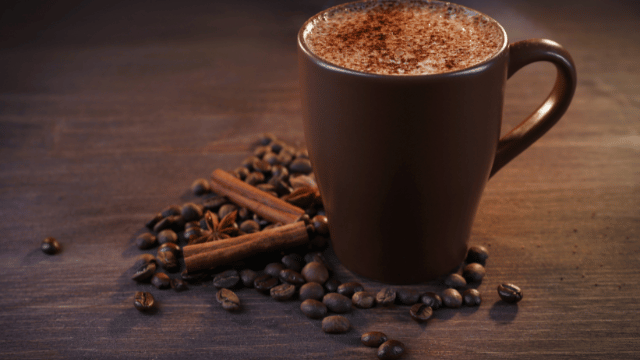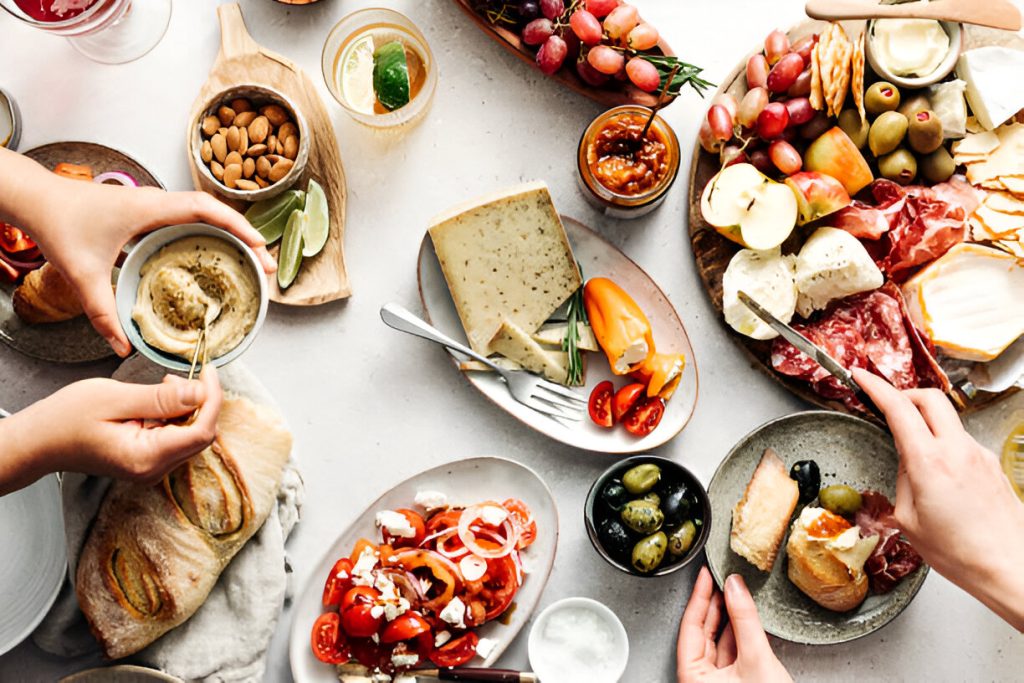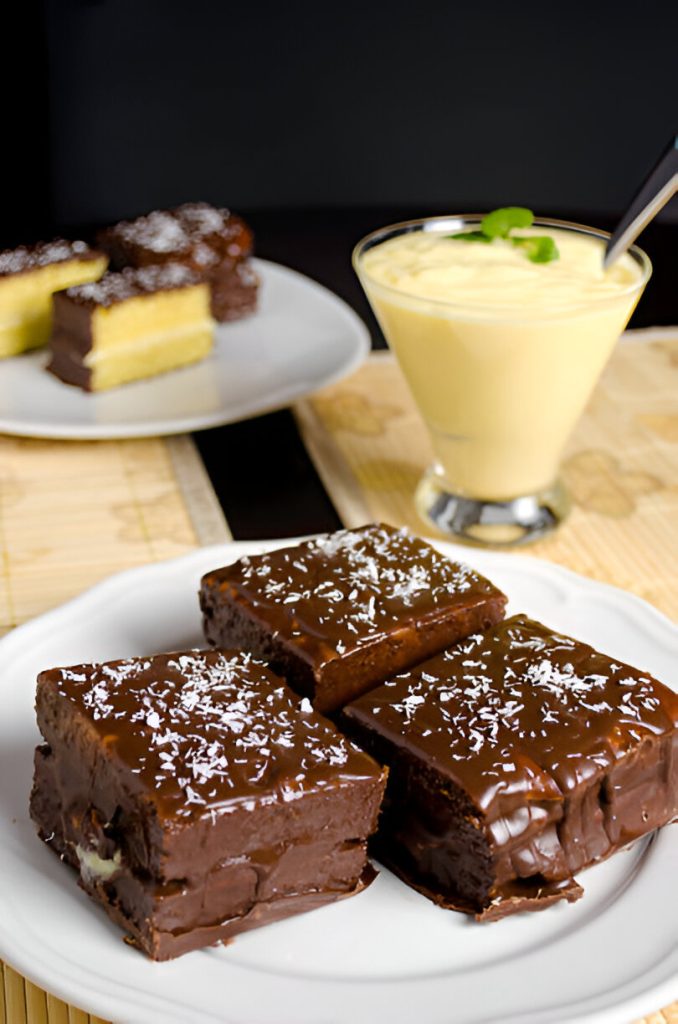If you’re itching to dive into the world of chocolate making, buckle up for a scrumptious journey! From selecting the finest cocoa beans to blending ingredients with precision, each step in the process is crucial. Join us as we unravel the secrets behind creating the perfect chocolate bar, exploring the artistry and innovation that make this delectable treat so irresistible. Get ready to satisfy your sweet tooth and unleash your inner chocolatier!
Selecting Quality Cocoa Beans
To make high-quality chocolate, start by selecting the best cocoa beans available for your recipe. The process of how to make chocolate from cocoa begins with carefully choosing the main ingredient – cocoa beans. When selecting quality cocoa beans, look for beans that are fully ripe and have been properly fermented and dried. This crucial step impacts the flavor profile of your chocolate significantly. You can make your own chocolate by sourcing these premium cocoa beans from reputable suppliers or specialty stores. Remember, the main ingredients in chocolate are cocoa beans, sugar, and cocoa butter. By starting with top-notch cocoa beans, you lay the foundation for a delicious and rich chocolate creation. So, the next time you embark on making chocolate from scratch, pay close attention to selecting the finest cocoa beans to elevate your final product.
Sorting and Cleaning Process
When making chocolate, you start the process by sorting and cleaning the cocoa beans to ensure quality and flavor in your final product. The sorting stage involves removing any debris or defective beans, while cleaning focuses on eliminating impurities like dust or dirt. This meticulous process is crucial as it sets the foundation for creating delicious chocolate. Next, the cleaned beans are roasted to develop their rich flavor and aroma. Roasting is a key step in how chocolate is made in steps, enhancing the beans’ taste profile.
After roasting, the beans are cracked and winnowed to separate the outer shell from the nib, which contains the cocoa solids and cocoa butter. These nibs are then ground into a paste, which forms the basis for making chocolate. Depending on the type of chocolate being produced, ingredients like milk, sugar, and cocoa butter are added to achieve the desired flavor profile. This is how milk chocolate is made, with the addition of milk solids and milk fat giving it a creamy texture and sweet taste. Ultimately, what makes chocolate sweet is the balance of sugar with the bitterness of the cocoa. This process of how chocolate is made step by step for kids can be a fun and educational experience, highlighting the transformation of cocoa beans into everyone’s favorite treat.
Roasting for Aroma Development
Roast the cocoa beans to enhance their aroma and flavor profile. The roasting process is crucial as it helps develop the rich chocolatey notes you love. The beans are heated at specific temperatures to bring out their unique flavors, creating that deep, complex taste. This step is where the magic begins, turning raw cocoa beans into the delicious chocolate you crave. Wondering if you can make chocolate from cocoa powder? While cocoa powder is made from processed cocoa solids, it lacks the cocoa butter content crucial for chocolate’s creamy texture. By roasting whole cocoa beans, you ensure that both the cocoa solids and cocoa butter are present, giving your chocolate the perfect balance of flavors and smoothness. So, grab those beans, fire up the roaster, and get ready to unlock the full potential of your chocolate-making journey through the art of roasting.
Bean Winnowing and Grinding
Continuing from the previous step of roasting the cocoa beans, you now need to winnow and grind them to further refine the chocolate-making process.
- Winnowing Cocoa Beans:
- Use a winnowing machine to separate the cocoa nibs from the shells.
- Employ sieves and fans to remove any remaining shell fragments.
- Ensure that only the pure cocoa nibs proceed to the next step.
- Grinding Process:
- Grind the cocoa nibs between stones to create a smooth cocoa paste.
- Monitor the consistency and texture of the paste as it forms.
- Achieve the desired fineness to enhance the overall flavor of the chocolate.
- Refinement Steps:
- Separate the cocoa solids from the cocoa butter for further processing.
- Combine the cocoa paste with other ingredients like milk, sugar, and additional cocoa butter.
- Ensure thorough mixing to create a harmonious blend of flavors before proceeding to the next stage.
Cocoa Butter Extraction
To extract cocoa butter from the cocoa paste, you need to separate the cocoa solids from the butter using a pressing method. After the cocoa beans are ground into a paste, the next step is pressing the paste to extract the cocoa butter. This pressing process involves squeezing the cocoa paste under high pressure to separate the fatty cocoa butter from the cocoa solids. The cocoa butter is then collected, leaving behind a dry cake of cocoa solids. The extracted cocoa butter is smooth, creamy, and rich with a pleasant cocoa aroma. This cocoa butter is a key ingredient in making chocolate, as it contributes to the smooth texture and rich flavor of the final product. The quality of the cocoa butter extraction process is crucial in ensuring the overall taste and consistency of the chocolate. By carefully pressing the cocoa paste to extract the cocoa butter, you can create high-quality chocolate with a delightful cocoa butter flavor.
Adding Additional Ingredients
After extracting cocoa butter from the cocoa paste, you regularly add additional ingredients like milk, sugar, and cocoa butter to enhance the taste of the chocolate. To create the perfect blend, consider the following:
- Milk:
- Whole milk adds creaminess and richness.
- Skim milk offers a lighter texture.
- Condensed milk intensifies sweetness.
- Sugar:
- Granulated sugar balances the bitterness of cocoa.
- Brown sugar adds a hint of caramel flavor.
- Powdered sugar ensures smoothness.
- Cocoa Butter:
- Enhances the smooth mouthfeel of the chocolate.
- Adds a glossy finish to the final product.
- Contributes to the overall richness and aroma of the chocolate.
Refining Flavor With Conching
As you refine the flavor of chocolate with conching, ensure optimal texture and taste development through controlled agitation and aeration of the chocolate paste. Conching is a critical step in chocolate making that involves blending and smoothing the chocolate to improve its flavor profile. During conching, the chocolate paste is continuously agitated while air is circulated through it, helping to develop a rich and smooth taste. The process can last from a few hours to several days, depending on the desired outcome. The movement and aeration help reduce acidity, bitterness, and any unwanted flavors, resulting in a well-rounded and mellow chocolate. The longer the conching process, the finer the chocolate texture and the more pronounced the flavor. By carefully monitoring the conching time and temperature, you can achieve a chocolate with a superior taste and mouthfeel. Mastering the art of conching will elevate your chocolate-making skills and ensure a delightful sensory experience for those who indulge in your creations.
Importance of Tempering
You frequently refine the flavor of chocolate with conching, ensuring optimal texture and taste development through controlled agitation and aeration of the chocolate paste. Now, you need to understand the importance of tempering to enhance the quality of your chocolate creations.
- Even Crystal Structure: Tempering chocolate aligns cocoa butter crystals, giving your chocolate a smooth texture and glossy finish.
- Precise Heating and Cooling: Properly tempered chocolate requires specific temperatures to form the desired crystal structure.
- Snap and Sheen: Tempered chocolate provides a satisfying snap when broken and a shiny appearance, indicating quality.
- Controlled Crystallization: Tempering ensures that cocoa butter solidifies in a stable form, preventing dullness and a waxy texture.
Liquid Chocolate Molding Techniques
Tempering chocolate enhances its quality by ensuring precise crystal structure and controlled crystallization, leading to a superior texture and appearance. Once your chocolate is perfectly tempered, the next step in creating delectable treats is liquid chocolate molding. This technique involves pouring the tempered chocolate into molds to shape it into bars, truffles, or other delightful confections.
To start, select the desired molds for your creations, ensuring they are clean and dry. Carefully pour the tempered liquid chocolate into the molds, making sure to fill them evenly to achieve a uniform structure. Tap the molds gently on the countertop to remove any air bubbles and to settle the chocolate evenly.
After filling the molds, allow the chocolate to set at room temperature or in the refrigerator, depending on the recipe instructions. Once the chocolate has hardened, carefully remove the molded pieces from the molds. Your beautifully shaped chocolates are now ready to be enjoyed or gifted to friends and family. Mastering liquid chocolate molding techniques will elevate your homemade chocolates to a professional level.
Storage and Shipment Practices
Continuing from the liquid chocolate molding techniques, how precisely is chocolate stored and shipped in the industry?
- Storage Practices:
- Chocolate paste shipped in liquid state to other manufacturers for further processing.
- Solidified chocolate stored in blocks for extended periods, requiring reheating before use.
- Cocoa Exchanges in major cities like New York, London, Hamburg, and Amsterdam play a crucial role in trade.
- Shipment Methods:
- Automation and computer control are utilized in chocolate making processes to enhance efficiency.
- Chocolates are transported in temperature-controlled environments to maintain quality.
- Advanced machinery is employed for conching, tempering, and molding processes to ensure the chocolate arrives in optimal condition.
- Industry Standards:
- Quality control measures are in place to guarantee that chocolate products meet specific criteria.
- Strict adherence to storage guidelines and shipment protocols is essential for preserving the integrity of the chocolate.
- Continuous innovation drives improvements in storage and shipment practices within the chocolate industry.
Innovations in Chocolate Making
Innovations in the chocolate making industry’s processes streamline production and enhance quality through advanced technology and machinery. Automation plays a significant role in optimizing efficiency, with computers monitoring and controlling various stages of chocolate production. Advanced machinery is utilized for conching, tempering, and molding, ensuring precise outcomes. The integration of cutting-edge technology not only speeds up manufacturing but also improves the overall quality of chocolate products.
Additionally, the use of robotic systems in chocolate factories has revolutionized repetitive tasks like packaging and labeling, reducing human error and increasing output. These robots work seamlessly alongside human workers, boosting productivity and maintaining consistency in the production process. Moreover, the implementation of artificial intelligence and data analytics allows for real-time monitoring of production metrics, enabling quick adjustments to enhance quality control measures.
Understanding Natural Flavors
To understand natural flavors in chocolate, you should first explore the variety of ingredients that contribute to the rich taste profiles of different chocolate creations.
- Vanilla and Fresh Herbs: Vanilla beans and fresh herbs bring a subtle complexity to chocolate, enhancing its aroma and adding depth to the flavor profile.
- Fresh Fruits and Fruit Purees: Incorporating fresh fruits or fruit purees into chocolate confections introduces a natural sweetness and tanginess that contrasts beautifully with the rich cocoa notes.
- Liquor and Real Vanilla: Adding liquor or real vanilla to chocolate not only imparts unique flavors but also creates a luxurious experience for your taste buds.
Understanding how these natural flavors interact with the base ingredients like cacao liquor, milk solids, and cacao butter can help you appreciate the delicate balance that goes into creating a truly remarkable chocolate treat.
Identifying Common Chocolate Ingredients
Identify common chocolate ingredients by examining the labels on chocolate packaging. When you look at the packaging of chocolates, you may come across ingredients like cacao liquor, sugar, cacao butter, lecithin, and vanilla in dark chocolate. Milk chocolate typically contains cacao liquor, sugar, cacao butter, milk solids, milk fat, lecithin, and vanilla. On the other hand, white chocolate is made up of sugar, cacao butter, milk solids, milk fat, lecithin, and vanilla. Other names for chocolate ingredients include cocoa liquor, chocolate liquor, cacao mass, cocoa mass, cacao beans, cacao seeds, cocoa seeds, cacao fat, cocoa fat, milk solids, milk fat, soy lecithin, and vanilla beans. For chocolate confections, you might find ingredients like cacao liquor, milk solids, cacao butter, butter, vanilla, natural flavorings, cacao beans, cocoa powder, nuts, and soy lecithin. Understanding these common chocolate ingredients can help you appreciate the complexity and richness of different chocolate flavors.
Significance of Soy Lecithin and Vanilla
To understand the significance of soy lecithin and vanilla in chocolate making, you must recognize their crucial roles in enhancing flavor and texture. Here’s why they are essential:
- Soy Lecithin:
- Acts as an emulsifier, ensuring smooth texture by binding ingredients together.
- Improves viscosity, making the chocolate easier to work with during production.
- Enhances shelf-life by preventing separation of cocoa solids and cocoa butter.
- Vanilla:
- Adds depth and complexity to the chocolate’s flavor profile.
- Balances the sweetness of the chocolate with its warm and floral notes.
- Provides a subtle aromatic quality that elevates the overall sensory experience.
Incorporating soy lecithin and vanilla in chocolate production not only improves the taste and mouthfeel but also contributes to the longevity and quality of the final product. These ingredients play a vital role in creating the decadent chocolate treats enjoyed worldwide.
Quality Indicators in Chocolate Making
When making chocolate, you can gauge quality through the conching process, tempering technique, and final product structure. The conching process plays a vital role in determining the texture, flavor, and shelf life of chocolate. Proper conching refines the chocolate paste, enhancing its overall quality. Additionally, mastering the tempering technique is crucial for achieving a silky sheen and a satisfying snap in chocolate bars. Tempering involves heating, cooling, and reheating the chocolate to ensure its optimal consistency and appearance. Lastly, the structure of the final chocolate product is a significant quality indicator. High-quality chocolate bars exhibit a uniform structure and a well-rounded flavor profile. By focusing on these aspects during the chocolate-making process, you can ensure that your end product meets the standards of excellence expected in the industry.
Frequently Asked Questions
How Do Different Types of Cocoa Beans Affect the Flavor Profile of Chocolate?
Different types of cocoa beans impact chocolate flavor profiles uniquely. The origin and type influence taste nuances. Explore diverse beans for rich, varied flavors. Experiment with origins to discover your preferred chocolate taste.
What Are Some Challenges Faced in the Storage and Shipment of Liquid Chocolate?
Storing liquid chocolate poses challenges like temperature control and ensuring safe shipment. You must maintain ideal conditions to prevent solidification and protect quality. Monitoring and adjusting are crucial for successful storage and transportation.
Can You Explain the Role of Automation in the Chocolate Making Process?
Automation revolutionizes chocolate making, enhancing efficiency and precision. Machines monitor each step, ensuring quality control and consistency. Embrace automation in the process for streamlined production, from bean to bar, in the chocolate industry.
What Are Some Unique and Creative Chocolate Creations Made by Chocolatiers?
Explore unique and creative chocolate creations from skilled chocolatiers worldwide. Indulge in gourmet barks, truffles, and exotic flavors crafted with precision. Join exclusive clubs to savor artful chocolates and experience the best in the industry.
How Do Chocolatiers Ensure the Uniform Structure and Well-Rounded Flavor of High-Quality Chocolate Bars?
To ensure high-quality chocolate bars with uniform structure and well-rounded flavor, chocolatiers meticulously temper chocolate, creating a silky sheen and crisp snap. Proper conching refines texture and shelf life, resulting in superior bars.






